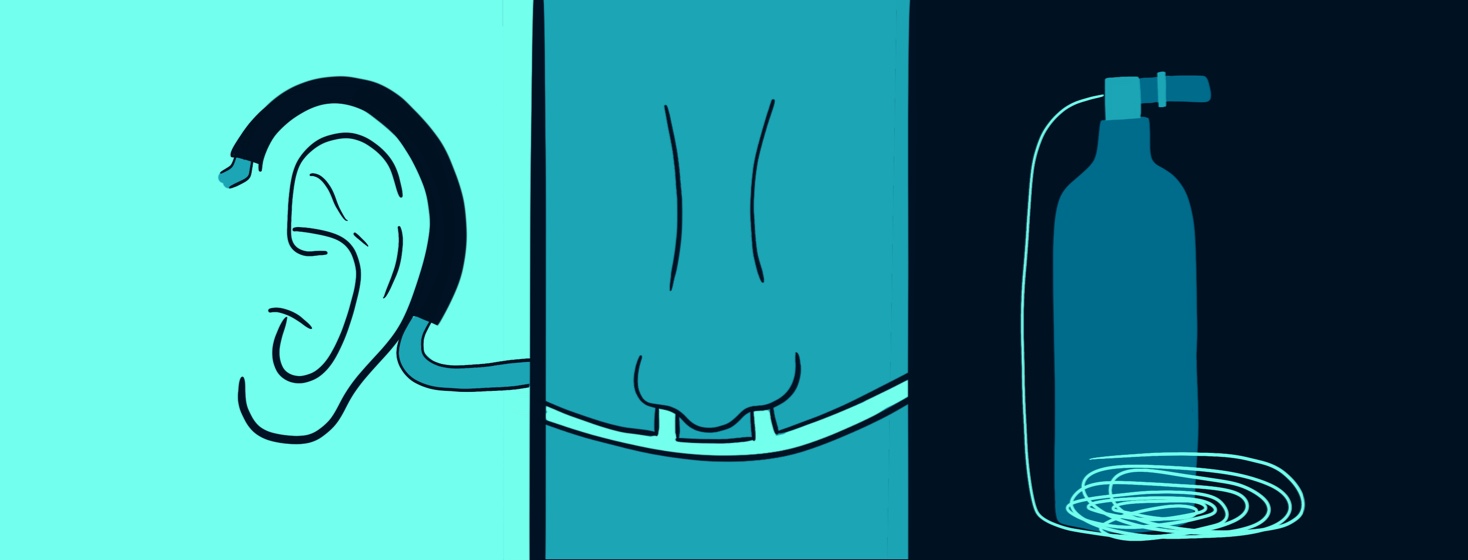Let's Discuss Nasal Cannulas
Many people with a heart failure history do not need home oxygen therapy. But there are some in this community who do benefit from it. A majority of those who do require home oxygen therapy use nasal cannulas. In this post, I will describe everything you need to know about nasal cannulas.
What is a nasal cannula?
It is the most common device available for inhaling supplemental oxygen. It is also the most comfortable device for inhaling oxygen. The nasal cannula consists of tubing. One end of the tubing consists of 2 nasal prongs. These are softly inserted into each of the nares (openings) of your nose. The other end of the cannula is connected to an oxygen flowmeter.
In a hospital, the flowmeter is attached to a wall. In this case, oxygen is piped into the walls of the hospital. In the home, the opposite end of the cannula is attached to a flowmeter on an oxygen concentrator or tank. Oxygen tanks contain 100 percent oxygen. Oxygen concentrators suck in room air and make 100 percent oxygen from that air.
How does a nasal cannula work?
Generally, a nasal cannula works at liter flows of 1-6 liters per minute (LPM). These are generally considered low flows that are well tolerated by most patients. Usually, 1-6 LPM will give you all of the oxygen that you need to keep your oxygen levels in the normal, healthy range.
For most people, 1-6 LPM is all that is needed. Some people, though, may need higher oxygen flows to maintain adequate oxygen levels. In the past, the only option for delivering higher flows was by using masks. There are various masks that can supply you as much oxygen as you need.
Today, we have access to what we call high-flow nasal cannulas. These are made of thicker tubing that allows you to inhale up to 15 LPM. Since they deliver higher flows, they are usually connected to some sort of humidifier.
What are bubble humidifiers?
Bubble humidifiers are nice for when a person needs oxygen flows that are higher than 5 LPM. They are added between the oxygen source, such as the concentrator or the tank, and the person breathing in the oxygen. They humidify the oxygen that you inhale. The goal of the added humidity is to prevent your nose from drying out. This can prevent nasal irritation.
Pressure sores on ears
When used long-term, the cannula tubing can cause a pressure sore over the top of your ears. This can be prevented by placing a gauze or foam padding over your ear where the nasal cannula comes into contact with it. This is what we do in the hospital, and I’m sure it will also work at home.
What to know about oxygen tubing
The tubing for nasal cannulas is 7 feet. Along with your nasal cannula, you will be given several 7-foot-long pieces of oxygen tubing. These can be added together using oxygen connectors or swivel adaptors. This allows you to make the tubing as long as you need for walking around your home while still wearing oxygen. The general recommendation is to not make this tubing longer than 50 feet.
The biggest problem with adding length to the oxygen tubing is that it can pose a tripping hazard. So, this is something to be careful of as your oxygen tubing gets longer.
What is your experience?
Has anyone in this community ever used a nasal cannula during their heart failure journey? Do you have any tips for others who may be using one for the first time? Share your experience by clicking the button below.

Join the conversation